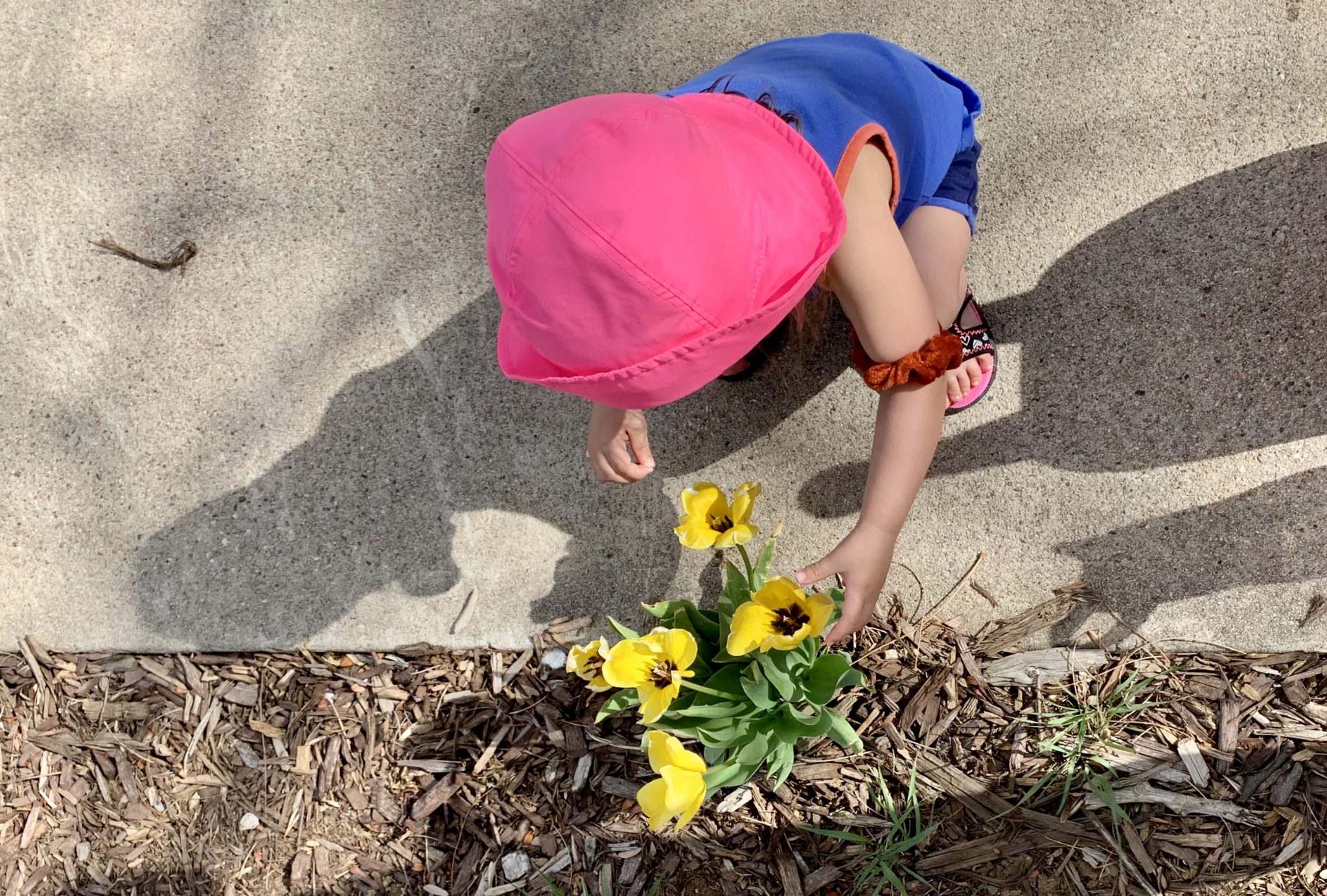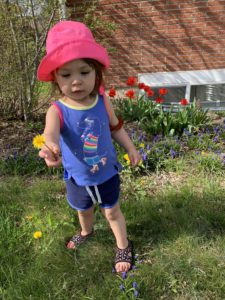
“The child has a different relation to his environment from ours…the child absorbs it. The things he sees are not just remembered; they form part of his soul. He incarnates in himself all in the world about him that his eyes see and his ears hear.” – Maria Montessori
Flowers are blooming, birds are chirping, and the weather is finally warming. Spring is a time of rebirth, offering a fresh perspective on the world around us. This is the perfect time to explore nature with your child and help them see a new perspective of the outdoors.
The CSU Early Childhood Center has put together a list of activities that you can do with your child in nature to enjoy this exceptional time of the year.
While exploring your neighborhood, yard, patio, or nature outside your window:
- Bring paper and mark making materials so children can draw representations of what they see.
- Allow yourself to share the childlike wonder of noticing small details and new growth.
- Leave electronics behind and focus on the world with your child.
- Venture outside at different times to increase your chances of seeing something new.
- Model using your senses. You could say, “I see big clouds,” “Wow, this grass feels so damp,” “Do you hear those airplane jets?” or “Yum, it smells like fallen pine tree needles.”
Infants
Sensory Time
- Take time to do tummy time outside and help your infant explore simple elements of nature that pique their interest. Be sure to play in the shade and with lots of sunscreen.
- You can provide opportunities for your infant to increase their ecological knowledge and awareness by exploring the weigh and texture of rocks, grass, sand, dirt, pinecones, and sticks.
Embrace the Mud
- Mix soil and water, or find a good mud puddle in the yard.
- Provide a few kitchen tools, like a whisk, spoon, or spatula, and containers of varying sizes.
- Let your baby explore and get dirty.
- Demonstrate putting your hands and fingers in the mud.
- Make a palm print in the mud.
- Draw in the mud or on another surface.
- Talk to your baby about what you are doing.
- Mess about and play!
Toddlers
Press Flowers an d Leaves
d Leaves
- Hunt for flowers and then press them between the pages of a heavy book.
- After a while, they will be dry, and you can use them to make crafts.
- Put clear contact paper over the flowers to create a placemat.
Find and Follow an Ant Trail
- Grab a magnifying glass and look all around for a group of ants. Don’t forget to check the cracks in the pavement.
- Try placing a small piece of food near them and see if they change their course.
Explore Holes and Mud
- Find a spot that is out of the way, dig a hole, and pour water in it to see what happens.
- Play with the mud, squish it between your toes, and jump over or even into the hole.
- When you are done, you can fill the hole with dirt again and spray your toddler off with the hose before you go inside.
Young Preschool
Nature Play Dough
- Make playdough by mixing 1 cup all-purpose flour, 1 cup water, 1/4 cup salt, and 2 tsp. cream of tartar.
- Collect leaves, flower petals, and other natural materials and mix them into the play dough. Try to avoid picking new growth.
- If you add lavender, rose petals, or crushed herbs, your dough will be naturally scented.
Look for Unexpected Nature
Nature often hides in funny places, between the cracks of a sidewalk, under a large rock, in abandoned lots, on the edge of lawns, or even inside your own home!
Nature Scavenger Hunt
Find something that is:
- a certain color
- dry, wet, shiny, or pretty
- tiny or huge
- crawls
- has no legs, four legs, or six legs
Older Preschool
Nature Scavenger Hunt – Extended
- Find three flowers that are different.
- Smell the flowers.
- Close your eyes and see if you can identify the flowers by smell.
- Find a fuzzy leaf.
- Find a leaf that releases an aroma when crushed, such as sage.
- Try finding things in categories, such as items with bark, items that are high, or items with branches.
Observe and Sketch
- Examine items carefully and draw what you see. For example, find flowers of different colors and point out the petals and other parts.
- Find a variety of leaves and observe the different shapes, colors, textures, and veins.
- You and your child can imagine you are scientists, observing and documenting what you see.
Explore Seeds
Find some weeds! How are their seeds dispersed? Do the seeds cling to your clothes, are they carried by the wind, or are they flung when the seedpods are touched? Ask your child what he discovered during this investigation.
“Passion is lifted from the Earth itself by the muddy hands of the young; it travels along grass-stained sleeves to the heart. If we are going to save environmentalism and the environment, we must also save an endangered indicator species: the child in nature.” – Richard Louv
The Early Childhood Center is in the Department of Human Development and Family Studies, part of CSU’s College of Health and Human Sciences.